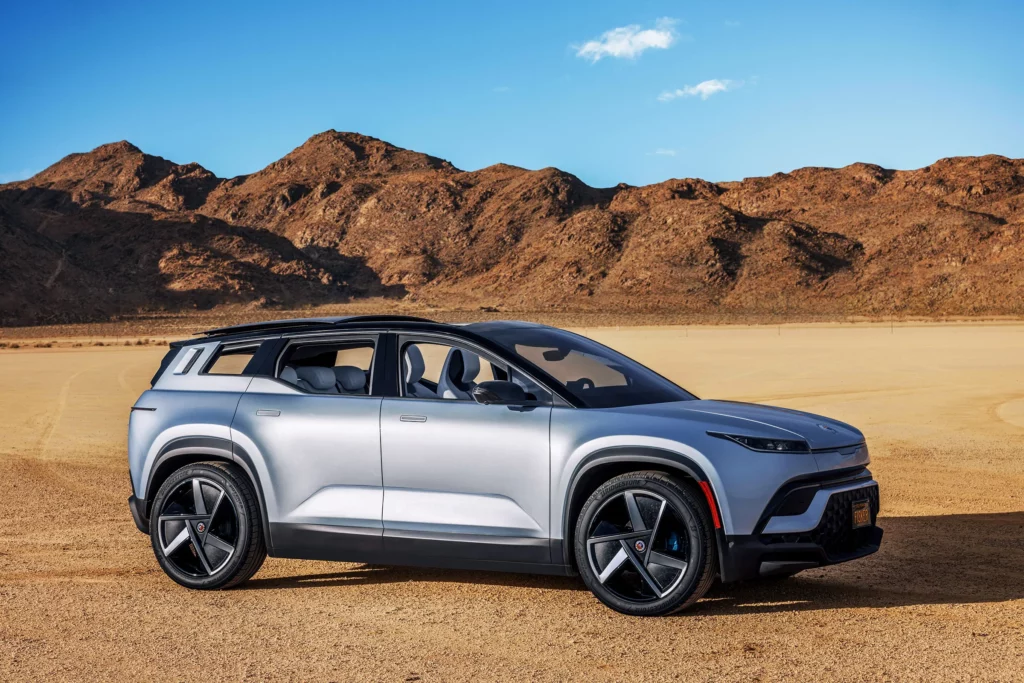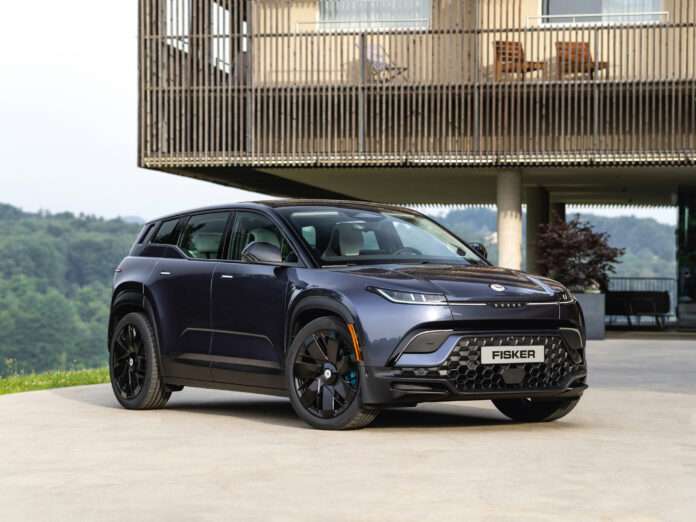Highlighting its mission to become the world’s most sustainable carmaker, Fisker recently showcased four groundbreaking vehicles and laid out its visions for evolving EV technology and sustainability.
Making their world debut, Fisker revealed the Ocean SUV, fitted with the Force E off-road package, the 1,000-plus-horsepower Fisker Ronin grand-touring four-door convertible, the Fisker PEAR sustainable city EV, and the Fisker Alaska all-electric pickup truck.
Chairman and CEO Henrik Fisker spoke of his ambition to redefine automotive segments with Fisker’s unique touch. “Fisker isn’t standing still,” he said in a statement. “We want the world to know that we have big plans and intend to move into several different segments, redefining each with our unique blend of design, innovation, and sustainability.”
Among the highlights was the Fisker Ronin, touted as the world’s first all-electric four-door convertible GT sports car. With a futuristic design, the Ronin integrates an impressive battery pack, projecting a targeted 600-plus mile range. The triple motor all-wheel drive is expected to produce over 1,000 horsepower, achieving 0-60 mph in approximately 2.0 seconds.

Fisker also introduced its vision of sustainable EV in the form of the PEAR (Personal Electric Automotive Revolution). Designed as a highly connected lifestyle vehicle with 35 percent fewer parts than competitors, PEAR is the first to feature Fisker’s Blade central computing platform. The compact body offers sporty handling while allowing room for a modular interior that can seat up to six. Priced starting at $29,900, PEAR is expected to be available by mid-2025.
The Fisker Alaska, a versatile all-electric pickup truck, joins the lineup with a focus on sustainability and functionality. Built on an extended Fisker Ocean platform, the Alaska offers multiple cargo configurations and aims to be the world’s lightest and most sustainable EV pickup truck. With projected pricing starting at $45,400, it is expected to be available in 2025.
For off-road enthusiasts, the Force E package for the Fisker Ocean SUV is designed to enhance torque, power, and range. It includes 33-inch tires, higher ground clearance, and an underbody plate for greater durability. Availability is scheduled for the first quarter of 2024.
The company has made a notable stride with its Fisker Ocean all-electric SUV. The vehicle boasts the distinction of having the lowest carbon footprint of any electric SUV, according to a recently published Life Cycle Assessment (LCA). This comprehensive analysis covered the full spectrum of the vehicle’s environmental impact, right from the extraction of raw materials to its eventual “end of use.”

“Since we founded Fisker Inc., building the most sustainable electric vehicles is not just a marketing slogan; it’s core to our culture,” Fisker said. The CEO further elaborated on the challenges Fisker embraced, from rethinking traditional automotive industry practices to collaborating with partners on sustainable car assembly, energy sourcing, and post-use vehicle recycling.
Fisker’s emphasis isn’t just on creating sustainable vehicles but also on pioneering a “circular economy.” This involves streamlining the reuse and recycling of vehicles and batteries and identifying ways to reintegrate battery materials into initial sourcing stages. “The carbon saved by choosing a Fisker Ocean over an average gasoline vehicle equals the carbon sequestered from 39 acres of US forests,” Fisker said.
Moreover, Fisker’s approach to sustainability data sets it apart in the automotive world. Instead of relying on generic estimates, the company primarily uses data sourced directly from its Tier 1 suppliers, ensuring a high degree of accuracy in carbon accounting. The LCA report, offering a transparent deep dive into Fisker’s processes, is available for public viewing.
Fisker’s global vision is evident as it begins delivering vehicles simultaneously in both the U.S. and Europe. The Fisker Ocean One, priced at $68,999, offers impressive features such as a 113 kWh battery pack and an EPA range of 360 miles on standard 20” wheels, making it a standout in its class. In Europe, it boasts a range of 707km/440 U.K. miles on similar specifications.
Fisker’s commitment to sustainability extends beyond its vehicles. “Innovation and sustainability, along with design, are our three brand values,” Fisker said. “By 2027, we intend to produce the world’s first climate-neutral vehicle, and as our customers reinvent their relationships with mobility, we want to be a leader in software-defined transportation.”
Related on Ethos:


